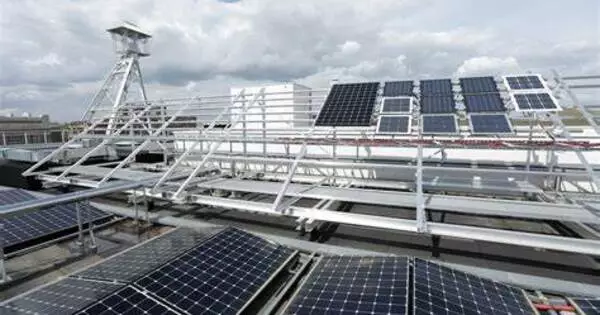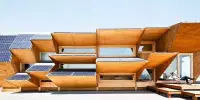BIPV (building-integrated photovoltaics) is a technology that integrates solar energy generation equipment into building design and construction. These are photovoltaic materials that are used to replace traditional construction materials in areas such as the roof, skylights, and facades. BIPV systems, as opposed to adding solar panels to an existing structure, are an inherent component of the building’s architecture, functioning as both functional building materials and renewable energy generators.
They are increasingly being used in the construction of new buildings as a primary or secondary source of electrical power, though identical technology can be retrofitted into older structures. The advantage of integrated photovoltaics over non-integrated systems is that the initial cost can be covered by reducing the amount spent on building materials and labor that would otherwise be necessary to construct the component of the building that the BIPV modules replace.
BIPV systems can take various forms, including:
- Solar Roof Tiles: These are designed to replace traditional roofing materials like shingles or tiles. They are integrated seamlessly into the roof structure and generate electricity from sunlight.
- Solar Facades: BIPV can be used on building facades, which means the outer walls of a structure can be designed to generate electricity. These facades can be transparent or opaque, depending on the design and functional requirements.
- Solar Windows: BIPV can also take the form of solar windows or glazing. These transparent or semi-transparent solar panels can be used as windows or skylights while also producing electricity.
- Solar Awnings and Canopies: These are solar structures that can be integrated into a building’s design to provide shade and generate solar power. They are often used in outdoor spaces, like parking lots or as entrance canopies.
BIPV systems offer several advantages:
- Aesthetic Integration: BIPV systems can be seamlessly integrated into a building’s design, providing an attractive and modern appearance. This contrasts with traditional solar panels, which are often added on top of existing roofs.
- Space Utilization: BIPV systems make efficient use of available space, as they serve a dual purpose – generating renewable energy and providing structural or architectural features.
- Energy Efficiency: They help reduce a building’s energy consumption by generating clean electricity, which can be used on-site or fed back into the grid.
By harnessing clean, renewable energy, BIPV systems help to reduce greenhouse gas emissions and promote sustainability. Because of their energy efficiency and lower operating costs, buildings using BIPV systems may have higher property values. BIPV systems’ initial installation costs can be mitigated over time by energy savings and potential incentives or subsidies.
However, there are also drawbacks to BIPV, including as higher upfront costs, the demand for skilled installation and design, and probable maintenance requirements. Nonetheless, as technology progresses and public awareness of BIPV’s environmental benefits grows, it is becoming a more common choice in sustainable building design and construction.












